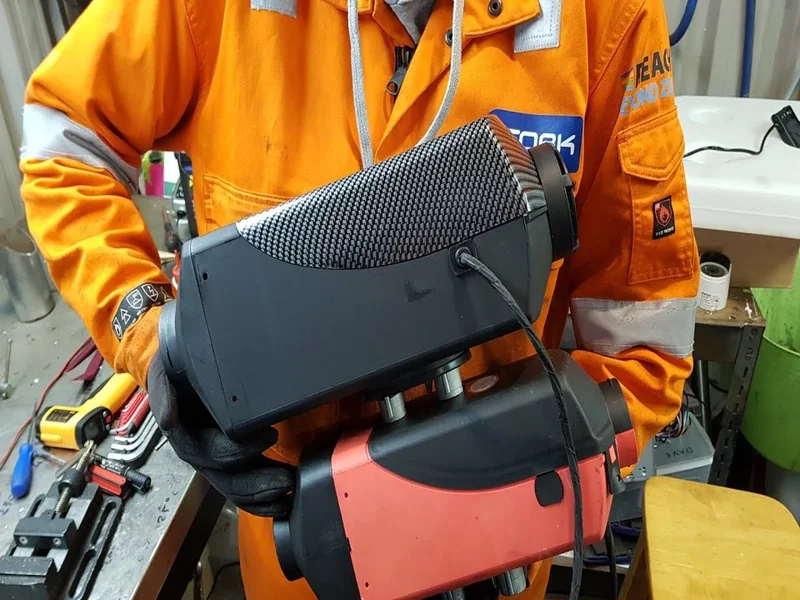A lot of people aren’t fans of RV toilets. We don’t blame them. RV toilets don’t ‘feel’ like a normal toilet. Not in the way that they flush, nor the way in which they feel when you sit on them. It is no surprise that a lot of people contemplate the idea of switching their RV toilet out for a real one.
Is this possible? Well, that is what we are going to be discussing on this page.
Can You Replace An RV Toilet With a Regular Toilet?
No.
Well, you can. However, it would completely ruin the RV. You wouldn’t be able to drive it anywhere.
While both RV toilets and regular toilets are built to do the same job, they will do things in a completely different way. In fact, the way in which they accomplish flushing your waste away means that there is no chance that the two can be easily swapped around. Let us explain.
How They Flush
A household toilet will have water sent into a plumbing system. The waste will end up in a sewer somewhere.
An RV toilet just sends the waste into your black water tank. Quite common size for RVs is a 30 to 40-gallon black water tank that you will need to empty yourself. Learn in this article how long a 30-gallon black water tank will last, but let’s get back to the regular toilet.
A household toilet actually needs much more complicated plumbing in place. Not just because of the size of the pipes that are needed to send everything down into a sewer, but because it needs a ‘trap’ inside of the plumbing to stop awful smelling gases coming up. This is not something that you need with an RV toilet.
Water Consumption
RV toilets consume about a third of the water that a proper toilet would use, and we are talking about an economical toilet there too.
If you had an actual toilet in your RV, then you would almost constantly need to be plumbed into an actual water system. There is no way that you are going to be able to carry all of the water that you need to keep an actual toilet up and running.
Weight
Regular toilets are heavy. While it probably wouldn’t mean too much in the grand scheme of things (there will be much heavier things in your RV), the more weight in the RV, the more gas you consume.
In rare cases, you may find that the floor around the RV toilet is not really built to withstand the weight of a normal toilet. It could weaken the floor, particularly if there will often be ‘heavier’ people using the toilet.
In smaller RVs and especially for small caravans, the Mass in Running Order will get greatly increased if you will decide to install a regular toilet. So your MTPLM will be reduced dramatically. If you are not familiar with these two terms then find out it here: What Is The Difference Between MRO And MTPLM?
Movement
This is probably going to be the real ‘killer’.
An RV toilet has been designed for going over bumps in the road. It has been designed for shaking about and moving all of the time.
A regular toilet can’t do that. For starters, the toilet will have to be consistently filled with water. Trust us. You don’t want that water shooting about your RV.
The regular toilet can’t be bolted down in the same way an RV toilet is either. Over time, this is going to cause cracks to form in the toilet. Basically, it won’t last long at all.
What Alternatives Are Available?
There are a lot of different toilet options on the market. If you want one that is going to be very, very similar to the way in which a household toilet works, then you are going to need to pick up a gravity flush model. Of course, if you want the ‘feel’ of a normal toilet, then you will want to get a china or porcelain RV toilet.
Now, you can potentially install a normal toilet in your RV. However, we will not be able to tell you how to do that here. This is because it will involve some serious plumbing skills as you would need to physically plumb the toilet into the main plumbing supply. This means that you will never be able to move that RV again and, even if you did move that RV, there won’t be a single RV park out there where you will be able to hook up the normal toilet.
Installing A New Toilet In Your RV
In this section, we want to give you a brief overview of how you can install a new toilet in your RV.
As we said, while it is possible to install a household toilet in your RV, that is going to be outside of the scope of this guide. This is because it would involve some serious plumbing, and you wouldn’t actually be able to take your RV anywhere.
Instead, we are going to come from the perspective that you want that gravity toilet installed.
Remember, all gravity toilets are different. This is a rough guide, but always check the manual that came with the toilet so you can be 100% sure that you are doing things properly.
Emptying The Toilet
Your first job is to get that water pump disconnected.
You will also need to flush the toilet several times to ensure that it is completely clear and you are not going to end up with an awful mess.
Disconnecting The Toilet
DIsconnecting the old RV toilet is dead simple, and it will show you just how different it is from a normal toilet.
There will be a few bolts on the floor of the RV. Unscrew them.
On the back of the toilet, there will be a pipe. Remove that.
You can now just live the old toilet out of place. It literally takes minutes for you to get everything unhooked here.
While the chances of the toilet having any water or waste in at this point are remote, we do suggest that you try and be careful with the old toilet still.
Empty The RV Waste Tank
Now you need to empty the waste tank for the old toilet. This is something that you have (hopefully) done several times before, so it should present that much of a challenge.
Remove The Gasket
Once that waste tank is removed, go back to the area where you removed the old toilet from. On the floor, there will be a rubber gasket. This needs to be removed. Don’t worry if it is a little stiff. You can pry it out if you want.
You should take this time to clear up the area a little bit. If there is any filth around the hole where the gasket used to sit, then make sure that you clean that out too.
Install the New Gasket
Now it is time to start installing your brand new toilet!
In the packaging, you will have a new gasket. Follow the instructions for the model that you have to ensure that the new gasket is installed properly. In 99% of cases, it will probably just need to slot into the old hole and you won’t have to do anything more than that.
Installing The Toilet
There are a few jobs that you will need to do here.
The first is to ensure that the toilet is perfectly lined up with the gasket hole. You will also want to ensure that the toilet is lined up with the bolt holes (from where you removed the bolts on the old toilet)
Once everything is lined up, bolt the toilet into place. You don’t want to turn those bolts too much. You want to do it just enough that the toilet won’t wobble about when you sit on it.
The second job is to connect the pipe to the back of the toilet. Again, you don’t want to do it too tight. This will sheer the bolts. You want to have it just tight enough that there will not be any leaks when you flush the toilet.
Checking Everything
Now all you need to do is check the system.
Turn that water pump back on (and ensure that you have water in the RV)
Flush the toilet several times. You will want to be checking around the bottom of the toilet and the back of the toilet to ensure that there are no leaks.
If there are no leaks, then fantastic! Your new RV toilet is installed. If there are some leaks, then you may need to play around with the bolts or the positioning of the toilet, depending on where the leak was.
Conclusion
Sadly, you won’t be able to install a normal toilet in an RV. Not without putting your RV out of commission, at least. You will, however, be able to install something very similar. Get your hands on a gravity RV toilet and you will barely know the difference.
A new gravity toilet shouldn’t be too difficult to install either. Just unplug the old one (just a few bolts and a pipe), and screw the new one in place. It will take an hour or two at the most, and even somebody that is not that brilliant at DIY will be able to do it!








